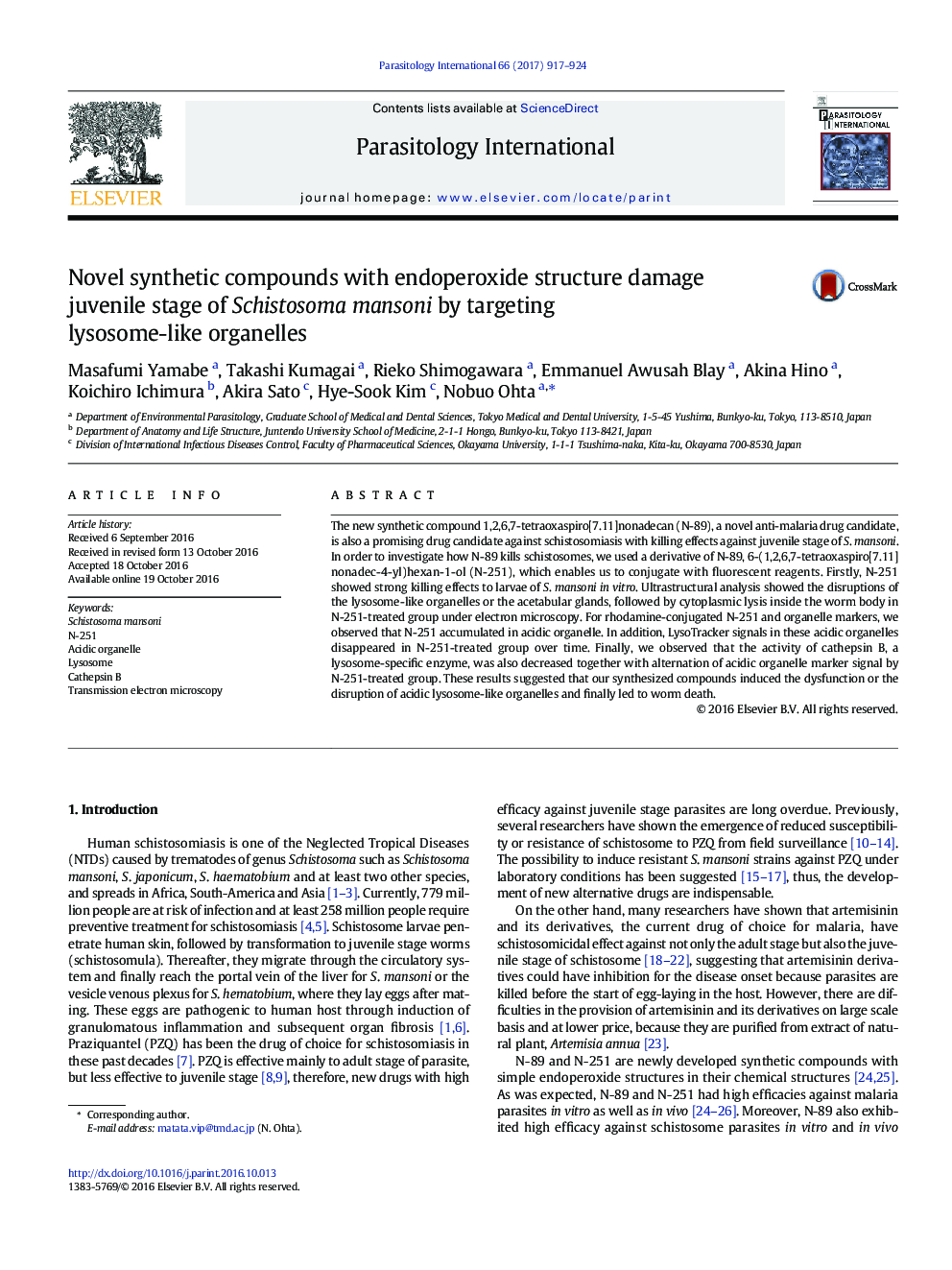| Article ID | Journal | Published Year | Pages | File Type |
|---|---|---|---|---|
| 5674308 | Parasitology International | 2017 | 8 Pages |
â¢N-251 exhibited high schistosmicidal activity in vitro.â¢N-251 accumulated in acidic organelles.â¢N-251 damaged and disrupted lysosomal organelles.
The new synthetic compound 1,2,6,7-tetraoxaspiro[7.11]nonadecan (N-89), a novel anti-malaria drug candidate, is also a promising drug candidate against schistosomiasis with killing effects against juvenile stage of S. mansoni. In order to investigate how N-89 kills schistosomes, we used a derivative of N-89, 6-(1,2,6,7-tetraoxaspiro[7.11] nonadec-4-yl)hexan-1-ol (N-251), which enables us to conjugate with fluorescent reagents. Firstly, N-251 showed strong killing effects to larvae of S. mansoni in vitro. Ultrastructural analysis showed the disruptions of the lysosome-like organelles or the acetabular glands, followed by cytoplasmic lysis inside the worm body in N-251-treated group under electron microscopy. For rhodamine-conjugated N-251 and organelle markers, we observed that N-251 accumulated in acidic organelle. In addition, LysoTracker signals in these acidic organelles disappeared in N-251-treated group over time. Finally, we observed that the activity of cathepsin B, a lysosome-specific enzyme, was also decreased together with alternation of acidic organelle marker signal by N-251-treated group. These results suggested that our synthesized compounds induced the dysfunction or the disruption of acidic lysosome-like organelles and finally led to worm death.
Graphical abstractDownload high-res image (151KB)Download full-size image
